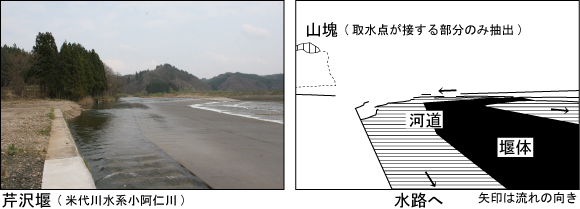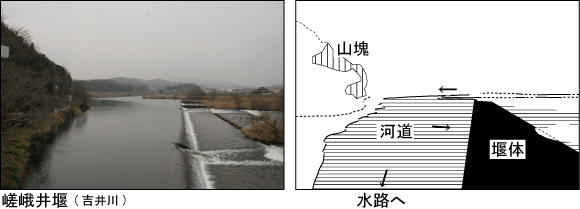japanese
Landscape composed with weir, river and mountain viewed at intake points
-
A previous study analyzed 90 cases of historical oblique weirs in 51 domestic watersheds by geological maps, and showed that the relationships of those weirs with both the river channels and the adjacent landforms were reasonable in terms of river hydraulics. Based on the finding, this study investigated how to be seen the weir bodies, the river channels and the adjacent landforms at the intake points of those oblique weirs actually. Analyses figured out the possibilities of viewing the ways of taking river water for irrigation along the flows and the mountain-feet at the intake points of 22 cases in specific. Such places were the viewing points of landscape emerged through the processes of the people's trials and errors for stable securement of water. It was also clarified that visual shields around the intake points such as groves and protrusions of the banks made visibility of the three elements of such landscape lower, and those elements were outside the views in some cases. These findings implied the possibilities of utilizing those intake points of the oblique weirs as viewing points of a sort of riparian landscape emerged from the local people’s lives with the rivers.



















-
more information
Murakami, S. (2016) : Research on how to be seen weir bodies, river channels and adjacent landforms at intake points of oblique weirs: Journal of the Japanese Institute of Landscape Architecture:79(5)569-574
























